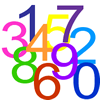
list
Current playing with number upper primary pupil
All these activities have something to do with multiplying and dividing. Can you spot the connections?

list
Related KS2 pupil playing with numbers
Further investigations with multiplication and division.
